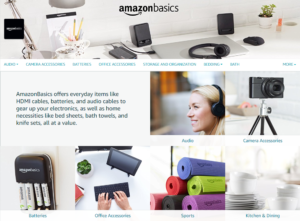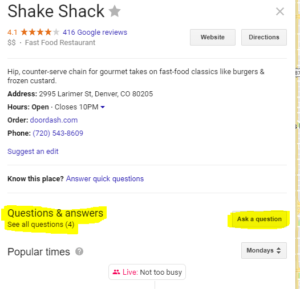The 2018 Denver Digital Summit featured digital marketing presentations by industry leaders discussing the best practices, latest trends and hottest strategies in marketing today. The topics covered ranged from search marketing and email marketing to customer experience, content marketing, and more. Here are 20 key takeaways from this year’s conference.
#1 Email Deliverability and Email List Curation is Critical
Email Service Providers are monitoring email engagement and determining deliverability. For this reason, it is vital to continuously review and remove inactive users from your email list. It is also important to communicate with your frequent openers more often than your full email list.
Example changes from Google:
- Gmail now offers proactive unsubscribe to email recipients.
- If Gmail is suspicious about an email, it will show an unsub button before opening.
- Gmail places the emails from brands that recipients interact the most with at the top of their inbox – Google’s “Top Picks”.
#2 Email Personalization Breaks through Inbox Clutter
Customers are getting barraged daily by marketing emails; segmentation and personalization are keys to email marketing differentiation and customer engagement. To increase email performance:
- Create segments in your email lists based on customer data. Possible segments could include: historical spending value segment, lifetime value segment, new customer segment, one time buyer segment, loyal buyer segment, etc.
- Create content based on these customer segments.
- Use personalization in subject lines, preview lines, and email copy.
#3 You Could Spend Less Hiring a PPC Agency vs. Adding Paid Search Headcount
Not only are companies finding value in the outside perspective and strategic advice PPC agencies bring, they are also discovering hiring such agencies costs between 25 – 40% LESS than adding headcount for the same skill set internally.
#4 Use 3rd Party Sites in SEO Efforts
A rising trend is to utilize 3rd party websites in your SEO efforts. Utilizing high ranking 3rd party review/blog/comparison sites can help generate an increase in traffic at a much lower cost than Google Ads. Often times, these 3rd party sites will be some of the first organic listings on a Google search. The best way to identify these sites is to do a Google search with a question your customers are likely already asking. Find the top 3rd party organic listings and then reach out to that site about potential placements.
#5 Understand How Key Paid Search Metrics Differ Based On Campaign Types
It is important to understand the various metrics for different ad formats to ensure you are interpreting data correctly. For example, Display Ads typically have high bounce rates and their page bounce performance should not be compared to other ad formats. For Search campaigns, keep an eye on revenue-per-click.
#6 Buyer Searches Begin with Amazon 49% of the Time, Plan Accordingly
49% of consumers begin their buying process on Amazon and 92% of those searches end in an Amazon purchase. When beginning to develop a marketing strategy for Amazon, always start by promoting and optimizing your top products and bestsellers. Be sure to optimize the Title, Key Product Features, Search Terms, and Enhanced Brand Content to improve your chances of increasing your products’ Sales Rank.
#7 Play Offense and Defense with Your Competitors on Amazon
With Amazon, play both offense and defense with your competitors. Play offense by bidding on your competitors’ keywords and brand names. Play defense by bidding on your own strategically selected keywords. Make sure to monitor these bids frequently to assess current competition
#8 Create an All Encompassing and Branded Amazon Store Page
While Amazon can be viewed as a competitor, it also gives you the shelf space to let your products show to a much larger audience than you might be able to attract on your own. Make sure your Amazon store page is fully developed and reflective of your brand.

#9 Own Your Instagram Audience
Create campaigns to collect your Instagram followers’ email addresses to ensure you, and not Instagram, own your audience.
#10 Use Video!
Video has significantly higher user engagement and message retention than non-video ad formats. Video will become over 80% of all internet traffic by the end of 2018. Also when video is mentioned in an email subject line it has been shown to increase email open rate by 19%. From these openers over 60% that view a video then convert to a sale.
#11 Facebook Has a New Algorithm to Prioritize Engaging Content
Facebook’s algorithm prioritizes content that keeps people on their site. To help improve engagement with your Facebook posts:
- Respond to ALL comments within 24 hours.
- Like and reply to comments to keep the conversation going.
- Comment on old and popular blog posts to bring them back to the top of the newsfeed (without boosting the post).
- Constantly review, refine and create content for your most highly coveted audience.
# 12 For Better SEO, Leverage Google’s Q & A Section
Google allows anyone, both inside your company and out, to post and answer questions in their Q&A section. Monitor and manage this area regularly to ensure you are leading the tenor and messaging in this critical area.
#13 Use Browser Plugins to Better Understand Search Volume, CPC and Competitiveness in SERPs
Use the Keyword Extensions browser extension to quickly see Google keyword search volume, CPC and competition.
#14 Use Google’s Mobile Friendly Test Tool to Improve Your Mobile Experience
46% of searches are performed on a mobile device. Use Google’s Mobile Friendly Test Tool to help optimize this experience.
#15 Slow Mobile Speed is the Top Mobile User Frustration
Slow load speed is the top frustration of mobile users. They find it 3x more annoying than pop-ups! 53% of mobile users will abandon within three seconds if your site has failed to load. 60% of the world’s connections are 2G, so consider converting at least some of your site to the AMP standard to dramatically increase load times.
#16 Understand the Difference Between Transactional and Informational Keywords for SEO
There are two types of keywords: transactional and informational. Knowing when to use each type of keyword can help improve reach, targeting and ultimately conversion rates.
Transactional keywords are directed at consumers closer to the bottom of the sales funnel. They are commonly used on product pages and typically have a high CPC because of their associated purchase intent.
Informational keywords are more for top of funnel searches. They are perfect for content aimed at reaching and educating new and broader audiences. Informational keywords are traditionally long-tailed keywords.
#17 Find Your Customer
Be responsive, transparent, and connect with customers in the ways the customer wants to connect with you. For example, if a customer doesn’t engage with posts on Facebook, it is because this is not where they want to interact with your business. Find the correct touch points like SMS or Email.
#18 Do Not Create a Customer Experience Around Internal Silos
Customers do not care about internal org charts and silos. They are looking for and expect the same experience throughout all channels, both online and in-store. Companies who provide a transparent, unified, and seamless customer experience, will gain the edge on their competition.
#19 Pay Special Attention to a First-Time Visitor’s Experience
Segment your customer data between first-time and repeat visitors. Understand the differences between these two audiences’ experiences and interests. Apply these learnings to future site changes to continue improving the customer experience for both audiences.
#20 Create a Zero-Click Customer Experience
Web customers only stay for an average of 1.7 page visits! Therefore strive to create a zero-click experience with dynamic, personalized content and highly relevant landing pages. Also, ensure visitors can find what they’re looking for immediately. For example, Room & Board shows a unique homepage to every customer based on the information available on them including purchase history.
